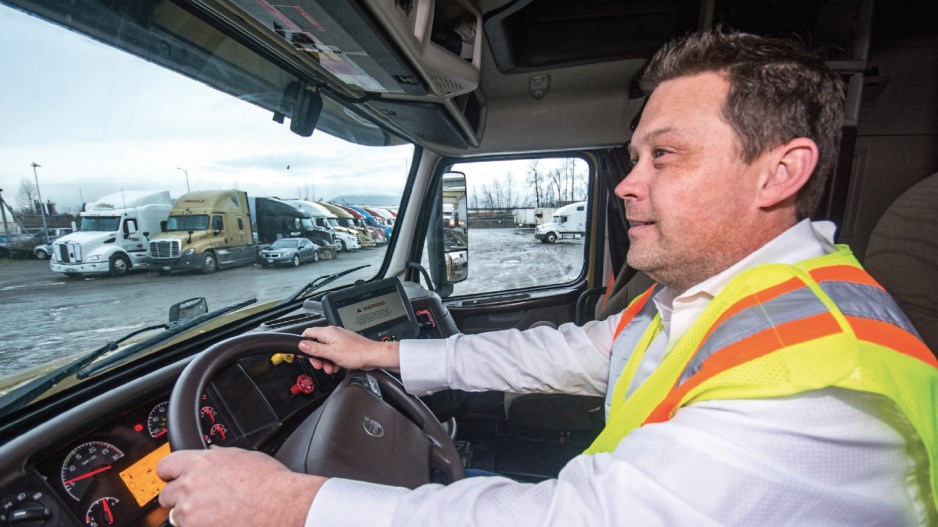British Columbia’s truck driver shortage is getting serious.
“Definitively we’re into a labour shortage. It’s affecting operations; it’s affecting goods movement,” says Dave Earle, president and CEO of the BC Trucking Association. “It’s starting to bite.” Over the past two years, vacancies within the industry have increased nearly 300% to 3,610 in 2018’s second quarter from 930 in 2016’s second quarter. The number of vacancies, according to Statistics Canada data, grew to 13.2% of industry jobs, which was nearly triple the size of the Q2 2018 average vacancy rate of 4.7% across all industries in B.C.
Ken Peacock, chief economist at the Business Council of British Columbia, says that a typical job vacancy rate in a specific industry is around 3%, so while the province is coping with a tight labour market generally, the problem is especially acute in the trucking industry.
Trucking issues affect a host of industries. Most consumer goods at some point in the logistics chain are transported by a truck. So higher wages and other benefits used to attract more drivers will eventually raise transportation costs, which will be passed on to shippers and consumers.
Peacock says labour shortages faced by construction, manufacturing and other industries that rely on similar demographic groups for their employee base exacerbate the challenge faced by trucking companies.
But Earle says different demographics can help fill trucking industry talent shortages.
“The workforce that we’re trying to attract and retain isn’t the same as the workforce even five or 10 years ago. Like most industries, we need to do a much better job engaging underutilized communities, including joint ventures with Indigenous communities as well as finding more ways to attract more immigrants and women into the industry.”
The driver shortage is being intensified by other factors, including the growth in e-commerce and online shopping, which has increased demand for home delivery of goods.
Earle adds that the industry will also have to adapt to the changing demands of B.C.’s workforce, which is now far less interested in working nights or long shifts that require extended absences from family.
He says the industry also needs to change the way it deals with customers, because industry norms that include midnight to 4 a.m. load deliveries and inflexible full-time working hours are no longer acceptable.
New technologies that more efficiently allocate trucks and equipment are part of the solution.
But the transportation industry needs help.
Earle says government policy could ease temporary foreign worker restrictions. Mandatory entry-level training requirements, he adds, would add a level of professionalism to the job.
The looming introduction of autonomous vehicles might have created uncertainty about the long-term future of truck driving, but Earle says that their threat to a career in the business has been exaggerated.
For example, major resource extraction projects often require trucks to go where there are no GPS signals, and trucks will likely need to be manned even after automated vehicles become mainstream.




